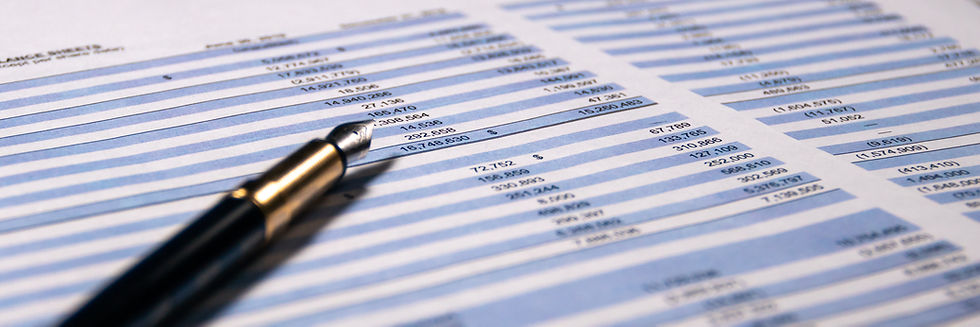Leasing Standard: What Your Business Needs to Know About ASC 842
- crabtree297
- Aug 9, 2022
- 3 min read

In February 2016, the Financial Accounting Standards Board (FASB) issued a new standard on leases – Accounting Standards Update (ASU) 2016-02, Leases (Topic 842). After some delay, the time for implementation is here, with ASC 842 being effective for all entities with fiscal years beginning after December 15, 2021 and interim periods within fiscal years beginning after December 15, 2022. The means for most companies, your effective date for lease implementation is January 1, 2022.
What’s New?
ASC 842 introduces a lessee model that brings most leases onto the balance sheet and aligns certain underlying principles of the lessor model with those in the revenue recognition standard, ASC 606, Revenue from Contracts with Customers.
Finance leases (formerly known as capital leases) originally appeared on the balance sheet, while operating leases did not. Both are now on the balance sheet, under right-of-use (ROU) assets and lease liabilities. For a finance lease, the lessee acknowledges interest expense and amortization expense. For an operating lease, a lessee recognizes the lease expense on a straight-line basis over the lease term.
Additionally, the new standard expands on lease disclosure requirements. For example, some disclosures require separating finance and operating lease costs, short-term and variable lease costs, weighted average remaining lease term, and weighted average discount rate.
What Kind of Lease do I have?
Let’s start with the basics.
The new standard applies to leases of property, plant, or equipment where the lessee asserts the right to control the use of the asset for a period of time.
The new standard classifies leases as finance or operating. If your lease does not satisfy the criteria for a finance lease, then, by default, it is considered an operating lease.
Finance Lease Criteria:
Ownership transfer of the underlying asset to the lessee by the end of the lease term.
Option to purchase the underlying asset.
The lease term is for a substantial part of the remaining economic life of the underlying asset. However, if the commencement date falls at or near the end of the economic life of the underlying asset, it is not used to classify the lease.
The present value of the sum of the lease payments and any residual value guaranteed by the lessee is equal to or exceeds the fair value of the underlying asset.
The underlying asset is of such a specialized nature that it possesses no alternative use to the lessor at the end of the lease term.
Some contracts do not take the form of traditional leases. Under the new standard, some contracts fall within the embedded leases category. Therefore, service agreements are particularly essential to explore. You may choose to outsource certain services to a third party. If such an agreement allows you the exclusive use of a specific server, you may have an embedded lease. We advise analyzing all contracts for embedded leases, and, of course, we can help!
What’s the Lease Term?
For lease terms of 12 months or less, the lessee can make an accounting policy election not to recognize lease assets and liabilities. The lease term begins with the commencement date and goes through the non-cancellable date. Renewal options likely to be exercised should be included in the lease term.
What Discount Rate Do I Use?
The rate to use in the calculation should be the rate implicit in the lease if it is readily determinable, or the lessee should use its incremental borrowing rate. The incremental borrowing rate is the interest rate a lessee must pay to finance the underlying asset over the lease term. Private companies can elect to take a practical expedient and use the risk-free rate through an accounting policy election.
What Does the Calculation Look Like?
Calculating the initial entry to the balance sheet is performed by determining the present value of the total lease payments over the lease term to find your lease liability. Your right-of-use asset is calculated by starting with your lease liability, adding in any prepaid rent and initial direct costs, and subtracting deferred rent and lease incentives. The ongoing entries will be determined by what type of lease it is. For finance leases, you will identify interest expense and amortization expense separately. For operating leases, you will recognize the lease expense on a straight-line basis over the lease term. In general, finance leases recognize expenses earlier in the life of the lease than for an operating lease.
We Can Help
The new standard is complicated, especially when you need to account for multiple leases and different types of leases. If you have questions about the new standard, how to implement it, the impact on your company, or potential software solutions, we can help!

Comments